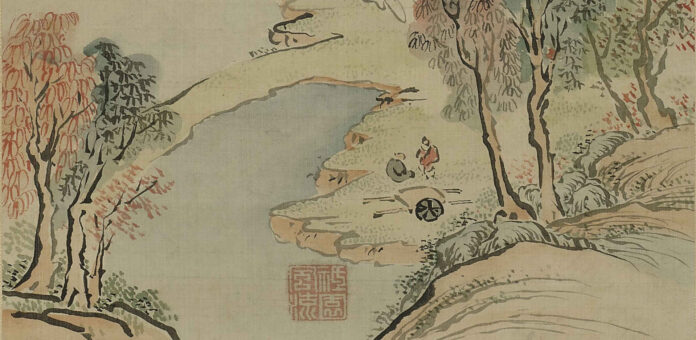The Museum für Asiatische Kunst will dedicate a temporary exhibition to the contributions of women to its Japanese art collection. The exhibition will be the first of its kind in the museum’s history.
Female scholars such as Beatrix von Ragué, who served as the museum’s first and so far only female director from 1966 to 1985, along with curators Steffi Schmidt, Setsuko Kuwabara and Khanh Trinh, played pivotal roles in shaping and expanding the Museum für Asiatische Kunst’s holdings. Together, they authored catalogues, curated exhibitions and organised events. Rose Hempel, who earned her doctorate in 1944 on one of the collection’s major works, achieved a remarkable milestone during the Second World War: she became the museum’s first female research assistant, breaking into the male-dominated curatorial sphere that had existed since 1906. And by donating her collection of Japanese paintings to the collection, she further enriched the institution.
However, Hempel was by no means the museum’s first or only female patron. Foremost among these donors was Marie Meyer (1834–1915), a widow of a factory owner, who bequeathed a collection of Japanese art to the museum. The collection was initially very extensive, but it was significantly reduced due to wartime relocations in 1945. Meyer had assembled the collection alongside the Freiburg art ethnologist Ernst Grosse (1862–1927). Antonie Straus-Negbaur (1859–1942), also known as Tony, excelled in the field of woodcuts. Straus-Negbaur’s collection, which comprised 637 catalogued items, was auctioned in Berlin in 1928. The Staatliche Museen zu Berlin acquired a book along with 30 individual sheets from the auction of her collection, a dozen of which are featured in this exhibition. Kimonos and other garments from the collection of Magdalene C. Hammonds (1903–1995), a concert pianist by training, regularly serve as highlights in the museum’s relatively modest collection of Japanese textiles.
Many women contributed significantly to the expansion of the collection in collaboration with their partners, such as Yoshie and Klaus F. Naumann, Dr Anneliese and Dr Wulf Crueger, Josefina Ogando Rubio and Dr Dietrich Neumann. However, it is also important to mention the significant contribution of the Deutsche Gesellschaft für Ostasiatische Kunst, which was formerly led by Mayen Beckmann and is currently chaired by Dr Jeong-hee Lee-Kalisch. Thanks to these women, the museum acquired works by female artists such as Morimura Ōkei (active around 1831) and Leiko Ikemura. The exhibition also features works by the painter Tokuyama Gyokuran (1727–1784), the ceramic artists Kayoko Hoshino and Yasuko Sakurai, as well as contemporary artists Naoko Matsubara and Aiko Tezuka.
A special presentation by the Museum für Asiatische Kunst of the Staatliche Museen zu Berlin, on display within the permanent exhibition Ethnological Collections and Asian Art at the Humboldt Forum, in room 318, “Art in Japan”.
Source : Museen zu Berlin






